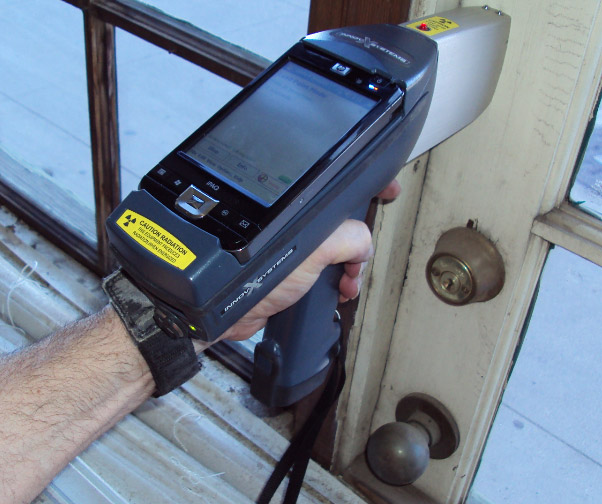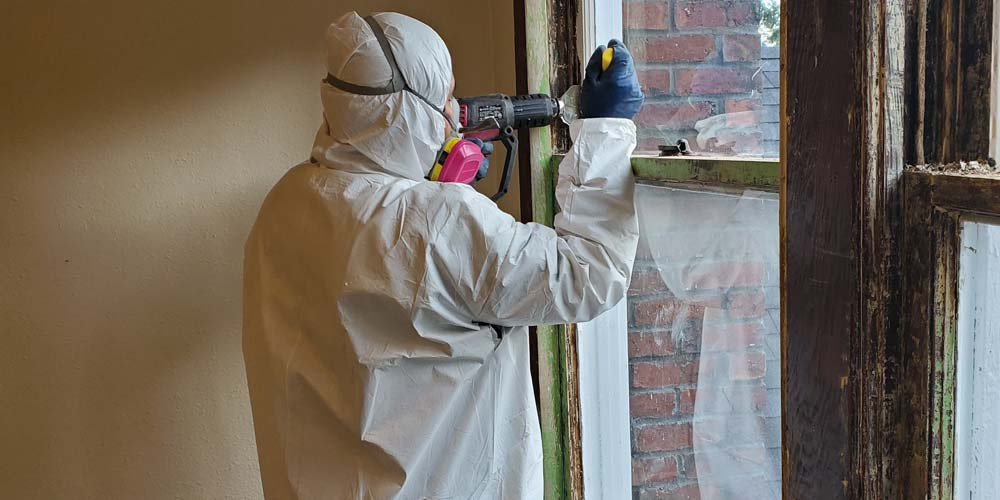Step-by-Step Refine for Successful Lead Infraction Removal
Following this, adherence to government and state guidelines is critical to developing an effective remediation plan. The actual removal requires knowledgeable personnel to apply these plans while strictly adhering to security protocols. What occurs after the remediation is completed?

Detection and Evaluation
Discovery and analysis are crucial actions in the removal of lead offenses. To ensure an efficient remediation procedure, it is crucial to conduct an extensive assessment of the setting where possible lead direct exposure exists.
Once detection is accomplished, an extensive assessment should be embarked on. This consists of reviewing the level and severity of contamination, as well as identifying populations in jeopardy, particularly children and pregnant females. Threat analyses often involve tasting and research laboratory evaluation, ecological studies, and health and wellness effect research studies. The gathered data ought to be thoroughly recorded to sustain the growth of an efficient removal technique (Lead Violation Removal in NYC).
Moreover, it is imperative to focus on areas with the highest degree of contamination and those that present the greatest wellness dangers. Effective interaction with stakeholders, including residential property owners, homeowners, and public health and wellness officials, is vital for making sure that all parties are educated about the searchings for and the subsequent actions required for removal. This initial discovery and assessment stage lays the groundwork for an effective lead violation removal process.

Legal and Regulatory Conformity
Browsing the landscape of lawful and regulatory compliance is a crucial element of effective lead violation remediation. Conformity ensures not only the safety and security of affected populations yet additionally the integrity and lawful standing of the organization accountable for removal.
This includes meticulous documentation of all removal tasks to show compliance. Failure to stick to these guidelines can result in serious charges, including substantial penalties, legal action, and reputational damage.
Involving lawful professionals specialized in ecological legislation can help with navigating these intricacies. Routine training and certification for all personnel associated with the remediation process are additionally compulsory to make sure adherence to safety and governing requirements. By prioritizing lawful and regulative compliance, companies can efficiently mitigate dangers and accomplish an effective removal end result.
Planning the Remediation
Properly intending the removal of lead violations starts with a detailed evaluation of the contaminated site. This initial evaluation should consist of a detailed website examination to determine the level and concentration of lead contamination. Comprehensive tasting and laboratory evaluation are paramount to produce an exact contamination profile. This data-driven technique ensures that removal initiatives are appropriately targeted and effective.
When the contamination is mapped, a threat assessment ought to be carried out to review potential health dangers to people and the setting. Lead Violation Removal in NYC. This assessment should think about aspects such as direct exposure paths, populace susceptability, and ecological impacts. The insights gathered will form the basis for choosing a proper removal method
Ultimately, establishing clear, possible objectives for the removal project is important. These goals must line up with regulative requirements and stakeholder assumptions to make sure conformity and neighborhood acceptance. Establishing a comprehensive remediation plan that outlines methods, timelines, and source appropriation right here will certainly promote an organized technique to the clean-up process.
Moreover, it is vital to engage with stakeholders early and keep clear interaction throughout the planning stage. This includes educating neighborhood communities, getting essential licenses, and coordinating with governing firms to make sure all legal and step-by-step needs are satisfied. A well-crafted remediation strategy not just deals with the contamination effectively but additionally develops trust and collaboration amongst all celebrations involved.
Implementing the Remediation
With a well-structured removal strategy in place, the emphasis shifts to the real execution of the removal tasks. This stage involves setting in motion site web the needed resources, consisting of competent personnel, specific equipment, and top notch materials. Begin by plainly delineating functions and responsibilities to make sure accountability and seamless control among group members.
The preliminary action in execution is to safeguard the site. This includes establishing containment areas to stop lead dust and debris from dispersing, as well as utilizing air purification systems to maintain air high quality. Next off, proceed with the elimination of lead-based materials. Use approaches such as wet scuffing, chemical removing, or encapsulation, depending on the seriousness and area of the contamination. It is vital to comply with safety methods, consisting of making use of personal protective devices (PPE) and correct disposal of hazardous materials.
Throughout the remediation process, conduct periodic assessments and air high quality checking to make read more certain compliance with regulatory standards. Effective communication with stakeholders, consisting of homeowner and passengers, is critical to maintain them educated of progression and any type of unforeseen advancements. By thoroughly complying with these steps, the remediation activities can be executed successfully and properly, inevitably mitigating lead dangers.
Post-Remediation Methods
Post-remediation techniques play a vital role in ensuring the long-term success of lead offense remediation efforts. These strategies incorporate continuous monitoring, upkeep, and area education to stop future lead direct exposure and make certain a risk-free environment.
First, normal tracking is important. This involves regular testing of the formerly impacted locations to ensure that lead levels continue to be within secure limitations. Homeowner need to establish a timetable for these tests, preferably in partnership with qualified environmental specialists.

Third, informing the community plays an essential role in maintaining the benefits of removal. Residents and residential or commercial property supervisors must be informed regarding the risks of lead direct exposure and the very best techniques for maintaining a lead-safe environment. Workshops, informational pamphlets, and area meetings can be reliable tools for distributing this info.
Final Thought
Successful lead infraction removal calls for a thorough, organized approach encompassing detection and assessment of contamination, adherence to legal and regulatory standards, precise planning, and effective execution of remediation efforts. This methodical procedure emphasizes the relevance of thoroughness and vigilance in resolving and minimizing lead contamination.